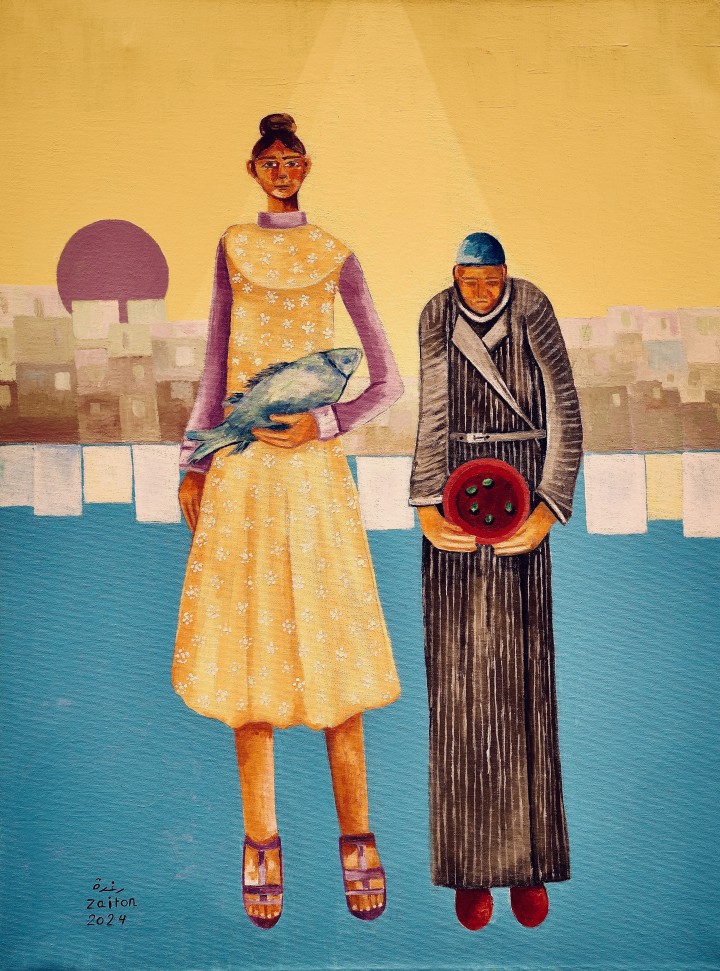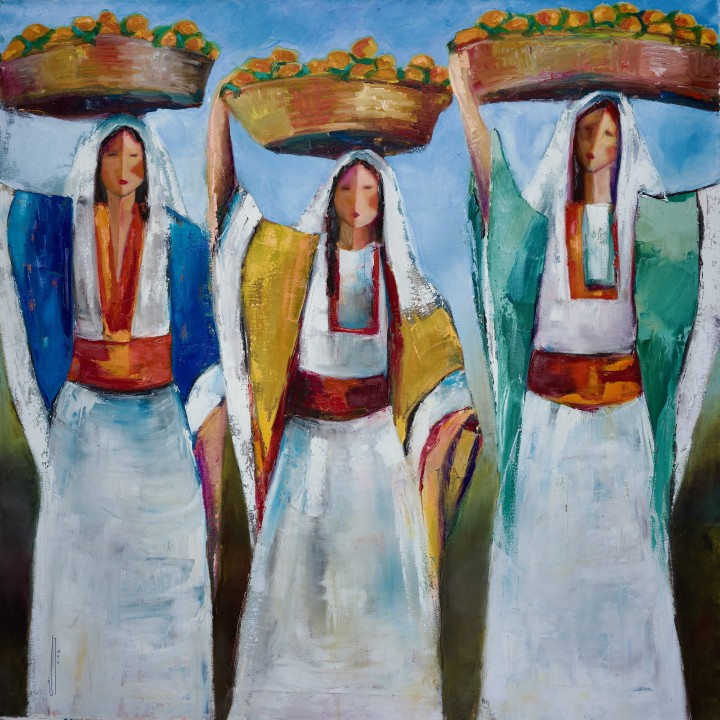Scottish Art News
Latest news
Magazine
News & Press
Publications
Interview: Faisal Saleh, founder of Palestine Museum Scotland
By Neil Cooper, 11.06.2025

Palestine Museum Scotland is hard to miss in its new home in the heart of Edinburgh’s commercial gallery district. The two artworks that fill the Museum’s windows looking out on to Dundas Street are a striking introduction to this holistic initiative set up by Palestinian-American Faisal Saleh as the first such venture in Europe.
Inside, the gallery floor is dominated by a map of Palestine in 1948 that features the names of 500 villages destroyed by Israel that year during the Nakba, in which more than 800,000 Palestinians were driven from their homeland. These names have been reinstated into the landscape by historian Dr. Salman Abu Sitta, who, aged ten, was himself forced from his home during the Nakba to seek refuge elsewhere.
The map is flanked on one side by a painting by veteran Palestinian artist, Samia Halaby, which shows idyllic looking fields spread out across the canvas. “It’s a typical Palestinian landscape before it was cut up,” Saleh explains. “It’s the sort of view I had when I was growing up there. It’s not a specific place. It’s the idea behind it. It looks like Tuscany.”
The idea behind Palestine Museum Scotland, filled with an array of paintings, sculptures and drawings by numerous contemporary Palestinian artists, is to show off the rich creativity emanating from a country currently in the throes of a genocidal assault. This sits alongside the sister Palestine Museum in Woodbridge, Connecticut, in the U.S, opened in 2018. Saleh’s mission for both is to tell Palestine’s story through the arts.
 Raghda Zaitoun
Raghda Zaitoun
“The aim of the corporate western media is to put Palestinians in a negative light,” Saleh explains on a whistle-stop visit to Edinburgh two weeks after the opening of the museum. “What we're trying to do here is to counteract that negative energy by providing opportunities for western people to learn more about the Palestinians first hand, and to see who they are for real. Our job is to tell a Palestinian story through the arts, which we feel is the most effective way to communicate with people, because it speaks to the heart. It stirs up emotion in people, and it's a much more intimate way to communicate to people and to tell the story of the Palestinians.”
Saleh is the eleventh child of a refugee family in El-Bireh (Ramallah), who were forced to flee their village of Salamah (Jaffa) during the Nakba. He came to America in 1969 aged seventeen, where he was a businessman for several decades before channelling his energies into the Palestinian Museums. With a five-year lease on the Edinburgh space, formerly the home of Arusha Gallery, Palestine Museum Scotland aims to present a rolling programme that will showcase Palestinian artists old and new.
 Nabil Anani, 'In Pursuit of Utopia', (2020. Photo courtesy Ziad Anani, Zawyeh Gallery.
Nabil Anani, 'In Pursuit of Utopia', (2020. Photo courtesy Ziad Anani, Zawyeh Gallery.
“I keep my finger on the pulse in terms of tracking down a lot of the Palestinian artists and communicating with them. I talk to people in Gaza every couple of days, first just to make sure they're still alive, and we have some of the artists represented here who are there now. Once we identify artwork and do an exhibition, we try to keep the artwork handy. We did an exhibition in London that ended January, and because we knew we were going to do something in Edinburgh, I kept it close by, and eventually brought it to a warehouse near here. Then once we signed the lease here, we had all this artwork waiting. So it was just a matter of trying to re-curate it with this space in mind.”
In terms of its location in Edinburgh, Palestine Museum Scotland couldn’t be more perfectly placed.
“We wanted to be in the middle of the fine art establishments of the city, and you could not find any place closer than this,” Saleh says. “We're across the street from the Scottish Gallery, and there are galleries left and right on both sides of the streets. It's really a fantastic spot.”
After a life in business, Saleh’s drive to do something for his homeland is clearly a labour of love.
 Tala Abu Nuware, 'Three Women Carrying Oranges', (2024). Courtesy of Palestine Museum Scotland.
Tala Abu Nuware, 'Three Women Carrying Oranges', (2024). Courtesy of Palestine Museum Scotland.
“I wanted to do something impactful, something meaningful,” he says. “The demonstrations, political rallies and campaigns are really important, but I felt I needed to do something different. I didn't really know a lot of art, but I just use common sense. I look at something, if I like it, chances are some other people are going to like it too.
“I'm not looking to create masterpieces or to change history with art. I just want to be able to show people the range of Palestinian art in a way that gets the feeling of the country across. We want people to feel that Palestinians are human, and that they deserve to be treated like human beings. That's really the mission of what we're trying to do.”
Palestine Museum Scotland, 13a Dundas Street, Edinburgh, Wednesday-Sunday, 11am-6pm. scotland@falastin.museum




